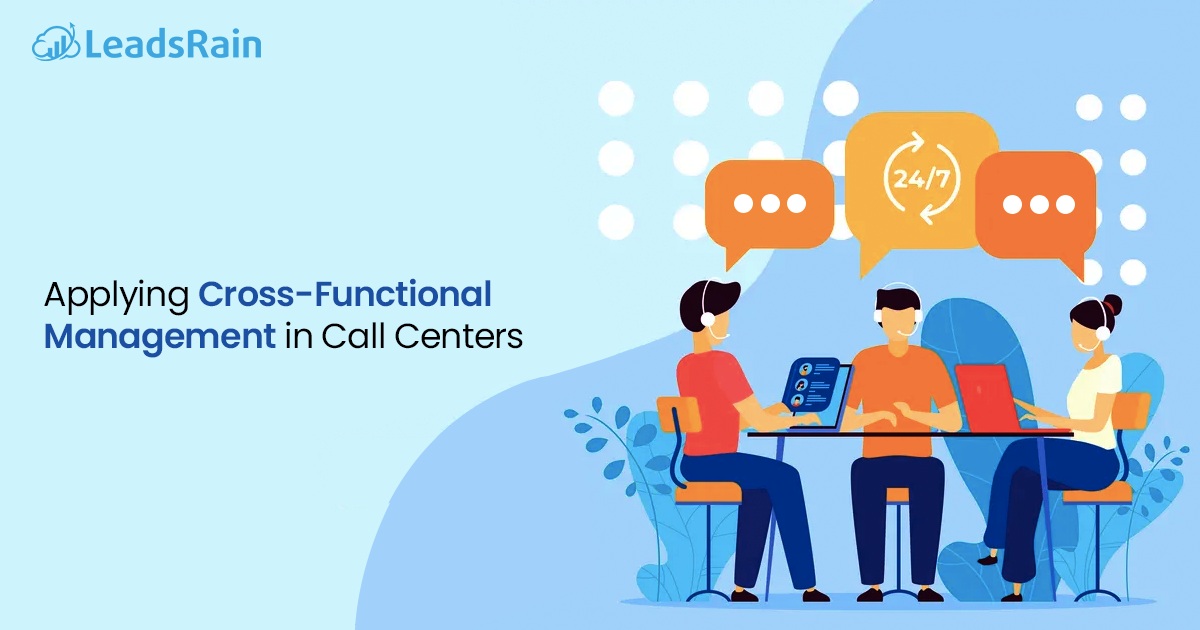The achievement of a business is determined by a harmonic combination of multiple key traits, including effective task organization, fluid communication across different teams, and the ability to tackle problems in a coordinated manner.
Unfortunately, many organizations are dealing with stiff hierarchies, departmental silos, and fragmented communications.
The manager’s position grows in cross-functional management. The cross-functional manager serves as a facilitator, ensuring synergy and collaboration among every organizational stakeholder. Its primary function is to set up activities and resources, foster communication, and develop a team environment.
What is Cross-Functional Management in Call Centers?
Cross-functional management is a strategy for coordinating and managing activities across multiple departments or functions within an organization.
Cross-functional management involves knocking down administrative silos, activating staff, and encouraging teams from multiple departments and hierarchical levels to collaborate on an umbrella goal: logistics, sales, marketing, accounting, legal, finance, human resources, CFO, and so on. Furthermore, cross-functional management encourages collaboration and participation.
Cross-functional management is particularly beneficial for campaigns that involve a spectrum of capabilities and perspectives, resulting in better decision-making and increased organizational effectiveness.
Why are they important?
Cross-functional management is essential as it promotes collaboration across departments, breaking down barriers that can stifle innovation and efficiency.
Furthermore, cross-functional management improves collaboration, automates procedures, and quickens resolving issues resulting in increased productivity. It’s instrumental in dynamic industries where agility and quick answers to marketplace shifts are critical to staying ahead.
Implementing Cross-Functional Management in Call Center
CFM is a methodology in which various wings of an organization collaborate to achieve common goals.
Here are some practical recommendations for successfully implementing cross-functional management:
Create an ecosystem for open communication.
Shatter down walls by encouraging open communication among departments like sales, customer service, IT, and HR. Weekly meetings can assist each employee stay aligned and apprised about common goals.
Common goals across functioning.
For example, the marketing team attempts to generate leads, but customer service aims to satisfy customers. As a result, both objectives should align with the overall call center performance metrics.
Set up cross-functional teams.
Make teams involving employees from several departments to handle specific tasks or challenges, such as improving customer response rates or fixing technological issues.
Integrate unified technology.
Use integrated software that allows teams to share information seamlessly and effortlessly. Outbound dialer system, CRM systems, and knowledge bases serve to accelerate workflow and improve interdepartmental communication.
Built a culture of accountability.
Each wing should accept responsibility for its role in attaining the call center’s objectives. Cross-functional management ensures that everyone is accountable for the entire CX, not just their department’s performance.
Backend with leadership quality.
Effective cross-functional management demands a powerful leader that inspires collaboration, resolves disagreements, and drives teams to achieve common goals.
Effective Tools for Call Center Cross-Functional Management
Cross-functional management is effective when appropriate technologies are used for better collaboration, interaction, and efficient workflows.
Some of the most effective cross-functional management tools are included below, along with a dialer for seamless communication.
1. Project management tools
Tools like Asana and Monday.com assist in speeding up work allocations, creating deadlines, and tracking progress across teams. With features like task lists, timeliness, and real-time updates, they keep all team members on the same page, regardless of department.
2. CRM Software
CRM software helps to centralize customer data, providing a uniform picture for teams in marketing, sales, and customer care. This guarantees that all departments use reliable data and can coordinate their efforts based on the customer’s journey.
3. Predictive Dialer Tool
Predictive dialer software are extremely beneficial for cross-functional teams who concentrate on customer outreach, sales, or support. Teams can handle large numbers of calls without having to manually dial each number by using these automatic call distribution diallers, which also increase contact rates.
4. Analytics and Reporting Tool
LeadsRain’s contact center software simplifies data analysis for teams from marketing, sales, finance, and operations in one location, offering insights that can inform strategy across departments.
Conclusion
Cross functional management is inevitable when your organization is dealing with multiple tasks, especially the organizations like a call center where all the tasks are interconnected and having utmost importance. In such a case cross-functional task management is important to manage and maintain efficiency and effectiveness.
Are you also facing the dilemma in managing cross functional tasks in your call center? – Don’t worry, our experts at LeadsRain are here to help you set things out. Just call us now or drop us a line at support@leadsrain.com




